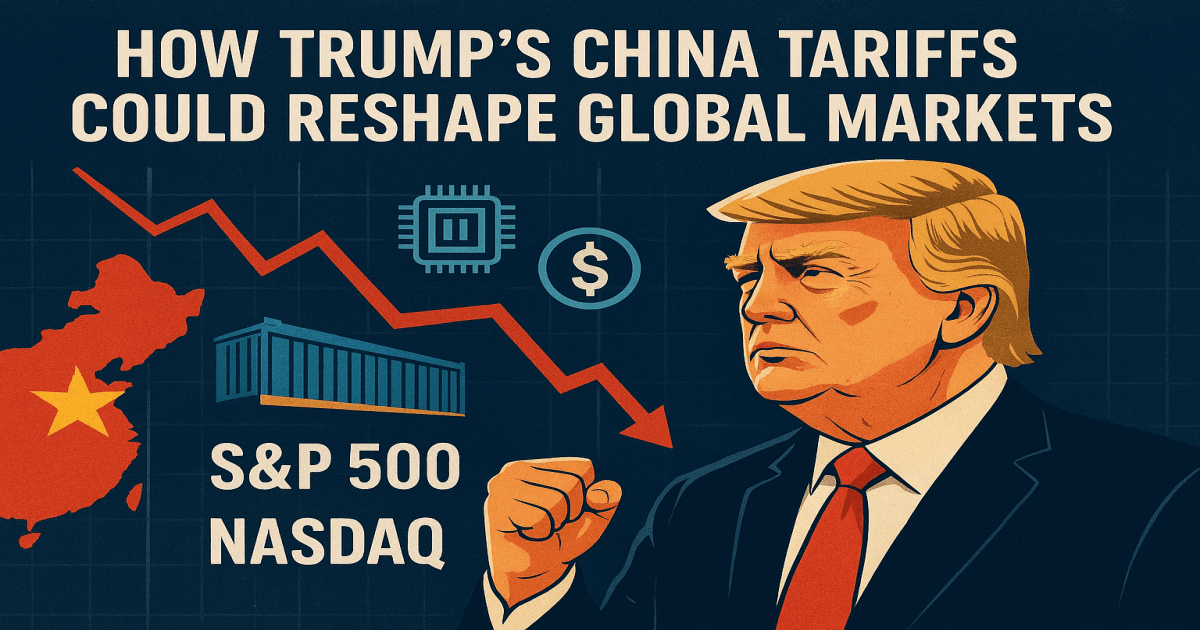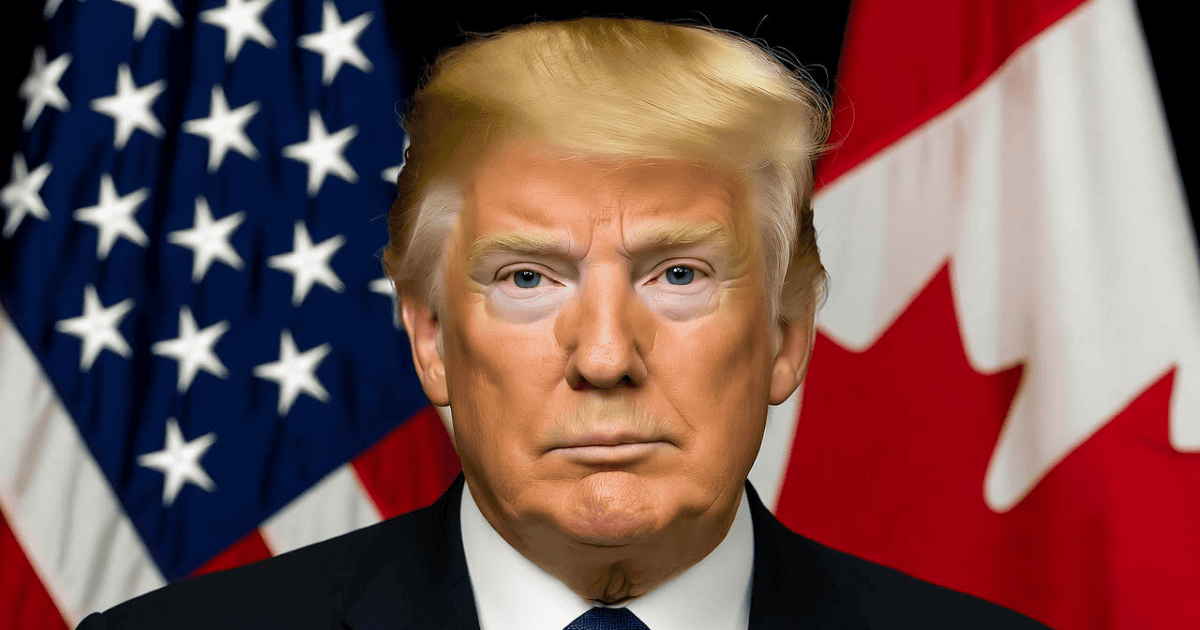
Table of Contents
The Announcement and Its Timing
On October 10, 2025, President Donald Trump declared that the United States will impose an additional 100 percent tariff on all Chinese goods beginning November 1. This tariff will be applied on top of the existing 30 percent duties already in place. The decision follows China’s announcement of export controls on rare earth minerals and restrictions on critical technology components, which Washington views as a direct threat to U.S. supply chains.
In addition to tariffs, the U.S. government will enforce export controls on critical software, further tightening restrictions on technology flows between the two largest economies.
Impact on Global Financial Markets
The announcement immediately rattled financial markets. U.S. stock futures tumbled, with the S&P 500 and Nasdaq futures falling sharply as investors priced in the risk of a prolonged trade conflict.
Commodity markets also reacted, with oil and industrial metals experiencing volatility due to fears of disrupted supply chains.
The U.S. dollar strengthened against major currencies as investors sought safe-haven assets, while the Chinese yuan weakened, reflecting concerns about Beijing’s export-driven economy.
Key Sectors Affected by the Tariffs
-
Technology and Semiconductors: U.S. firms reliant on Chinese rare earth minerals and components face higher costs and potential shortages.
-
Consumer Goods: Electronics, apparel, and household products imported from China will see significant price hikes, impacting American consumers.
-
Automotive Industry: Car manufacturers dependent on Chinese parts may face production delays and rising costs.
-
Software and Digital Trade: New export controls on critical software could disrupt global tech supply chains and cloud services.
Economic Repercussions for the U.S. and China
For the United States, the tariffs are designed to pressure Beijing into trade concessions, but they also risk fueling higher inflation by raising import prices. American businesses that rely heavily on Chinese suppliers may face reduced profit margins, while consumers could see higher prices on everyday goods.
For China, the tariffs threaten to undermine export competitiveness at a time when its economy is already slowing. Beijing may retaliate with further restrictions on rare earth exports or by targeting U.S. companies operating in China.
Geopolitical Consequences
The decision also casts doubt on upcoming diplomatic engagements. Trump suggested there is “no reason” to meet with Chinese President Xi Jinping at the planned APEC summit, signaling a breakdown in dialogue. This raises the risk of a full-scale trade war with global repercussions.
What Investors Should Watch Next
-
China’s Response: Any retaliatory measures from Beijing could escalate tensions further.
-
Federal Reserve Policy: If tariffs drive inflation higher, the Fed may face pressure to adjust interest rates.
-
Corporate Earnings: Multinational companies with exposure to China will likely revise earnings forecasts.
-
Supply Chain Shifts: Businesses may accelerate diversification away from China toward Southeast Asia, India, or Mexico.
Conclusion: A Defining Moment in U.S.-China Trade Relations
The 100 percent tariff on Chinese goods marks one of the most aggressive trade measures in modern history. While the move is intended to protect U.S. industries and counter Beijing’s export restrictions, it risks triggering inflation, disrupting global supply chains, and intensifying geopolitical tensions.
For investors, the coming weeks will be critical. Monitoring China’s response, Federal Reserve signals, and corporate earnings guidance will be essential to navigating the uncertainty created by this historic escalation in the U.S.-China trade war.



